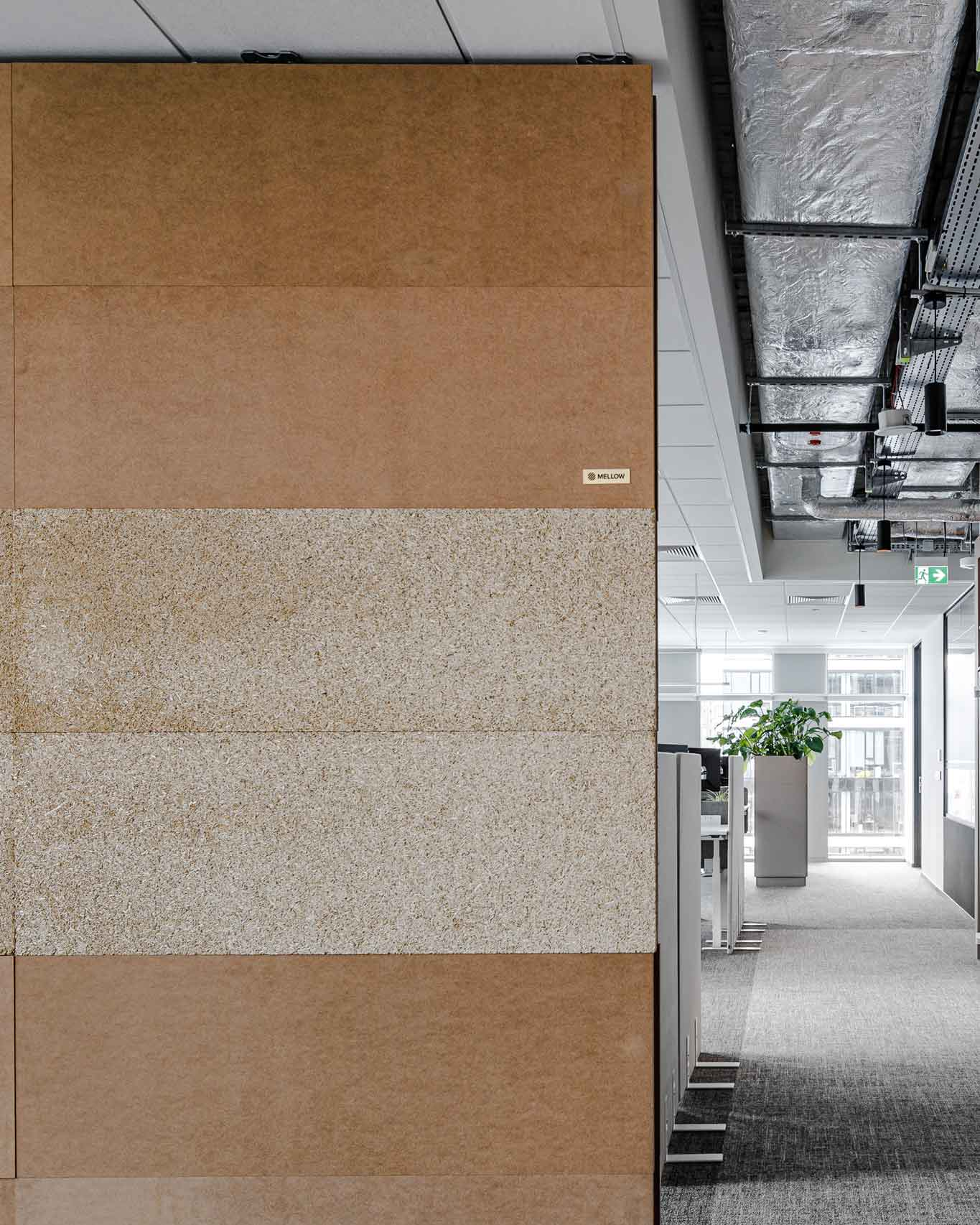
How Can Biophilic Design Boost Sustainability? 3 Examples of Biophilic Design in Sweden
Author: Arabella Angelina
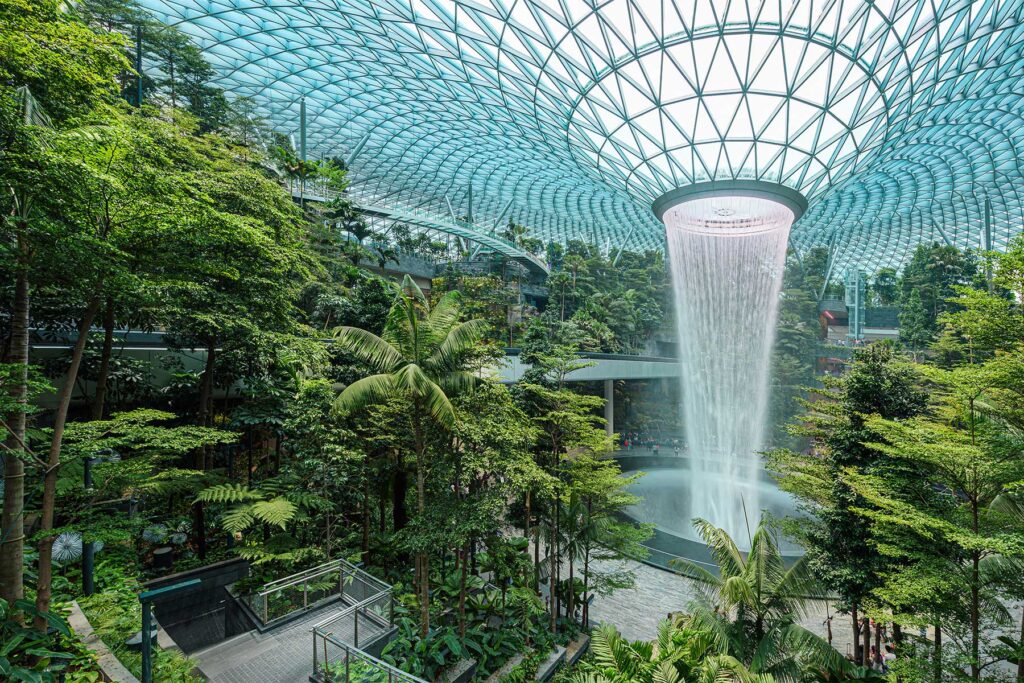 Source: https://www.thegardener.co.za/the-gardener/garden-design/what-is-biophilic-design/#google_vignette
Source: https://www.thegardener.co.za/the-gardener/garden-design/what-is-biophilic-design/#google_vignette
Rarely does it happen to think of biology in conjunction with architecture, but the quest for sustainability has unveiled some exciting fusions between various fields of research, leading to new concepts, and one such concept is biophilic design. But what exactly is biophilic design and how it contributes to counteracting the threats of climate change is the subject we will be discussing further.
Biophilia hypothesis and its relationship to architecture and design
Before tackling the issue of biophilic design, let me introduce some concepts from evolutionary psychology. As fancy as it might sound, the term biophilia does correlate to evolutionary psychology, by being a part of the “biophilia hypothesis.” What this hypothesis states is that human-beings have an innate drive towards nature and their living environment. The first to coin this term was the psychologist Erich Fromm in order to outline the psychological tendency of connection with everything that is alive. If Fromm named it, then biologist Edward O. Watson contributed to its popularisation during the 1980s through his book Biophilia (1984). He argued that this inborn inclination for association with other forms of life stems from our biological structure, making us unavoidably bound to it. Although the concept became recurrent in theoretical writings quite recently, its origins date back to Antiquity. This idea of affiliation can be frequently noticed in Aristotle’s practical philosophy through what is known as philia, which means affectionate regard or friendship. The accounts that Aristotle provides when referring to philia is a mutual interchange of goods that ensures the goodwill of both parties involved. By adding bio- to philia one can infer that it summarises as love of life.
After a short historical introduction of the term, we can further proceed with its contextualization in an architectural backdrop. When put together, biophilic design refers to various practices that incorporate natural elements within architectural settings to improve one’s well-being. Not only does it offer a wide range of mental and physical health benefits, but it can also serve as a practical tool for bolstering sustainability. Biophilic design has shown an increase in popularity in the past few years, especially since the COVID-19 pandemic. Let’s explore some of its main advantages.
Some of the main benefits of biophilic design
- It enhances and preserves biodiversity
When integrated in urban planning, it can significantly impact the preservation of different species that are threatened by the changing climate factors. Providing more green spaces ensures that such species are allotted a specific place in order for them to grow and thrive.
- It plays a role in the reduction of carbon emissions
Considering that plants constantly improve their habitat by filtering air, building urban areas or indoor spaces that contain diverse natural elements is paramount to the shrinking of carbon dioxide emissions.
- It fosters a sense of place
Even though one can embrace some foreign elements in their house, biophilic design puts an emphasis on our connection to the surrounding environment. Being aware of the indigenous flora and integrating it in your daily life can bring about a sense of belonging, strengthening the relationship one has with the local habitat.
- It improves mental and physical health
Psychological studies have repeatedly shown that spending time in nature can significantly boost one’s mood and assists in alleviating depression or anxiety symptoms. Statistics tell us that in office building productivity increases by up to 8%, while in an educational environment learning rates can rise by 20-25%. Apparently even when it comes to hotels, customers are willing to pay 23% more for rooms that contain natural elements.
- It raises sustainability levels
The inclusion of natural elements, as we discussed earlier, can align with sustainability practices. Improved air quality, better water management and prolonged building lifespans are some of the advantages of incorporating biophilic design that outline an eco-friendly approach.
3 examples of biophilic design in Sweden
According to the LEED rating system (Leadership in Energy and Environmental Design), some of the top-ranking countries for 2022 were Mainland China, India, Canada, Brazil and Sweden. By occupying the fifth place on the green building ladder, Sweden has come across as one of the frontrunners in this field. Considering that sustainability is a cornerstone for Swedish design and architecture, its commitment to environmentally-safe practices has led to the construction of some greatly exciting buildings. Here are some three examples of buildings located in Sweden that align with the criteria of biophilic design.
- The Atri Villa
 Source: https://wevux.com/atri-the-sustainable-house-designed-by-naturvillan0070505/
Source: https://wevux.com/atri-the-sustainable-house-designed-by-naturvillan0070505/
Designed by Naturvillan, a Swedish company that focuses on generating minimal environmental footprint when building homes, the company is predominantly specialised in Nature house projects. What makes Atri stand out is the incorporation of its own system for heating, electricity, water and nutrient recovery absolutely off-grid. Its biophilic design resides in the use of natural elements and of natural lighting.
- The Mirror Cube
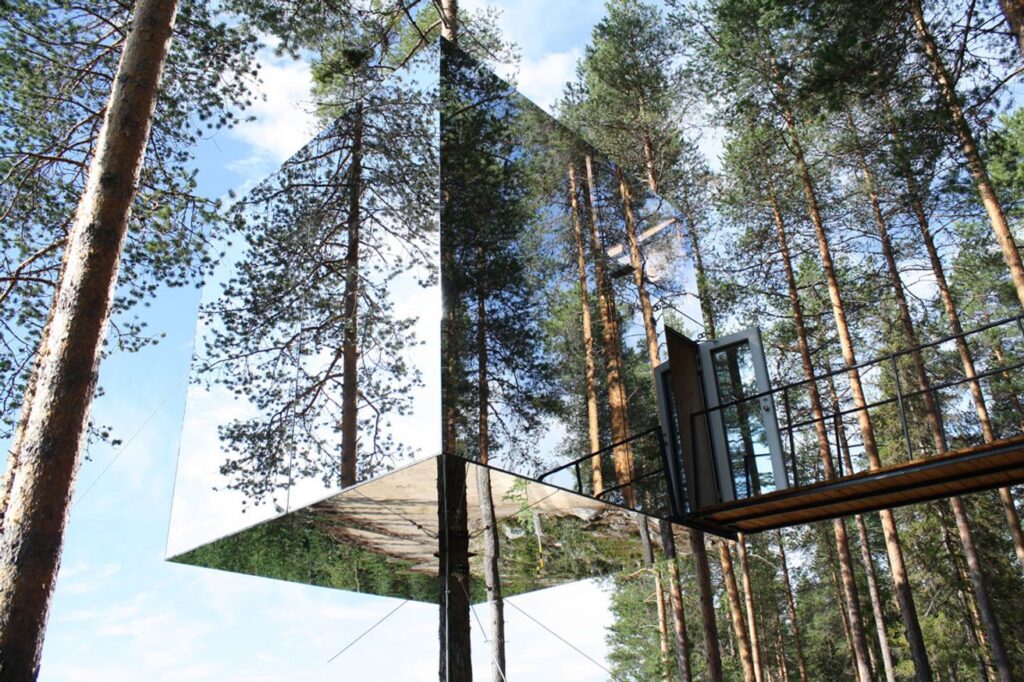 Source: https://architectuul.com/architecture/mirrorcube-treehotel
Source: https://architectuul.com/architecture/mirrorcube-treehotel
A tree house hotel in the middle of a forest epitomises best the connection one can feel for the natural environment. Designed by Tham & Videgård Arkitekter, the hotel’s appearance can appear quite misleading at first, resembling a lightweight aluminium box which mirrors the surrounding trees and the sky. Not only is its exterior alluding to nature by reflecting it, but its interior is also made of plywood. But all these biophilic elements are also in alignment with sustainability awareness. The two architects were conscious of the threat this box represents for birds. It could make them collide with the reflective glass. A transparent ultraviolet colour, visible only to birds, was installed into the glass panes. The hotel is located in a small village, near the Arctic Circle in Sweden, this secluded placement making it a perfect option for an escape far away from the hectic pace of the city life.
- Karolinska Institutet Gym
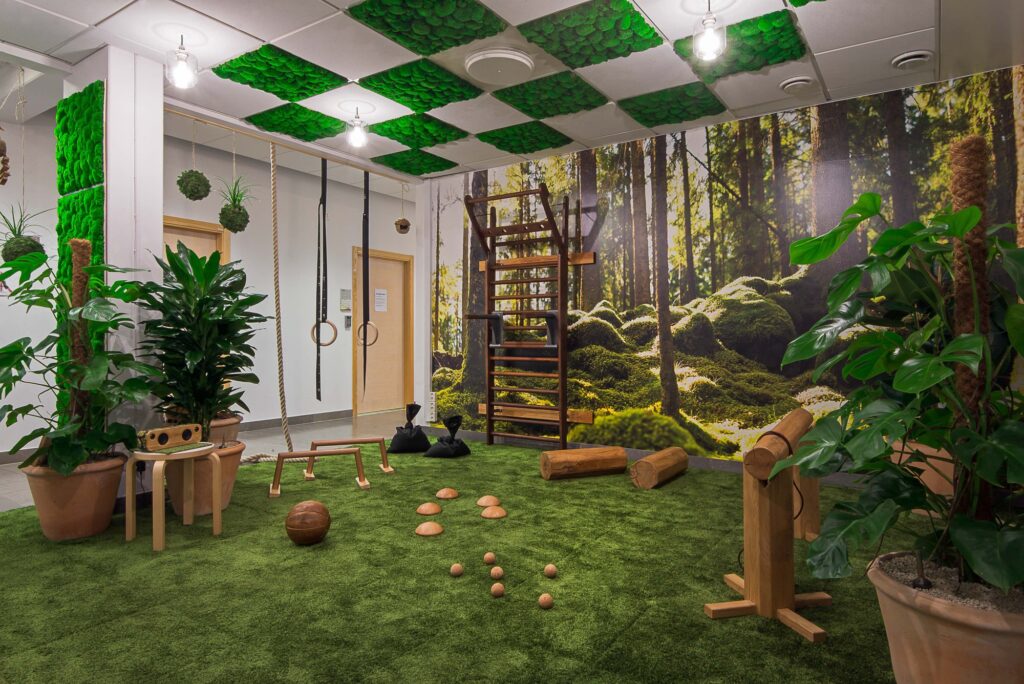 Source: https://www.facebook.com/photo/?fbid=1851122814932607&set=pcb.1851122894932599
Source: https://www.facebook.com/photo/?fbid=1851122814932607&set=pcb.1851122894932599
A scientific study commissioned by BioFit in 2017 has outlined the perks of a biophilic design integrated in a setting allocated for exercise, known also as indoor green exercise. After four weeks of careful study, the researchers have found, based on the answers of every participant, that stress was reduced by 75%, the feeling of being connected to nature increased up to 80% and an overall mood improvement could be noticed by up to 87%. Therefore, in 2018, the gym design BioFit completed a gym fit-out for the Karolinska Institutet. Through the integration of circadian lighting, air-purifying plants and sustainable materials, the gym harnesses the benefits of biophilic design in order to provide a better experience to its clients.
Conclusion
The implementation of biophilic design doesn’t only provide some stress-reducing benefits, but it also opens up a range of possibilities in regards to urban conditions in the future, leading to increased sustainability, the preservation of biodiversity and an overall betterment of city life. One should not consider sustainability just a fleeting and fashionable trend, especially during these times of crisis. As climate change issues are increasingly dire, acting in the present can lead to a sustainable future.
We here at mellow are very passionate about sustainability and securing a better future for all of us. If you’re interested in learning more on how to start your journey in becoming more sustainable, don’t hesitate to book a call below!
References:
https://www.ucem.ac.uk/whats-happening/articles/biophilia-examples-built-environment/
https://wevux.com/atri-the-sustainable-house-designed-by-naturvillan0070505/
https://www.un.org/en/actnow/facts-and-figures
subscribe to our newsletter!

Latest ArtiCles

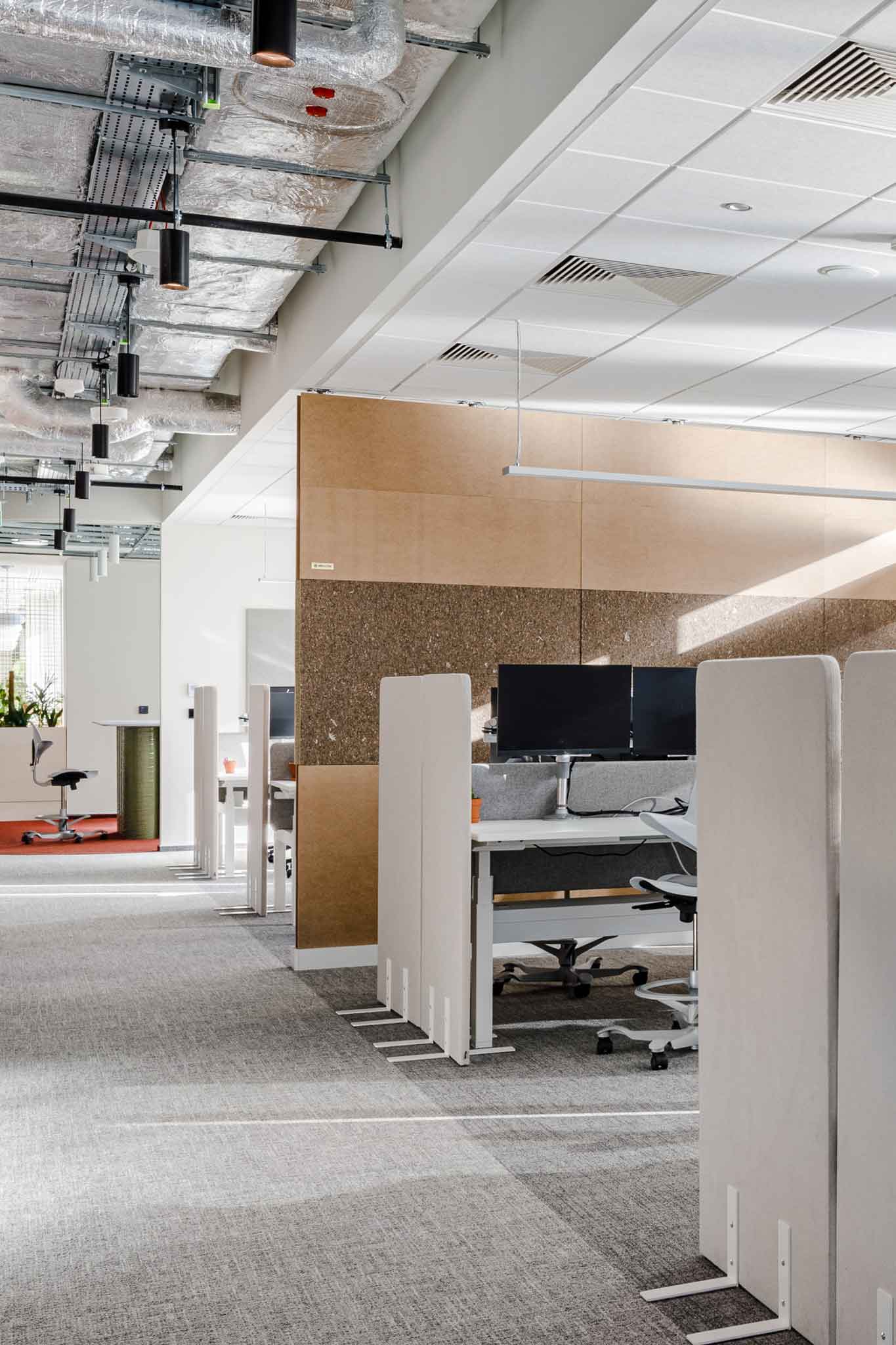
building better with adaptable partition walls

4 Responses
It’s like you’re reading my thoughts! You seem so knowledgeable about this topic, almost like you’ve written the book on it. A few more visuals might enhance it even more. I’ll certainly be back!
hi!
thank you for your feedback! we’re sp happy you enjoyed it.
Ida, team mellow designs
Thank you, I’ve recently been looking for info about this topic for a long time and yours is the best I have found out till now. But, what in regards to the conclusion? Are you positive about the source?
hi!
thank you for your comment. feel free to use the sources to further dive into the topic and learn more about how we came to our conlcusion!
Ida, team mellow designs